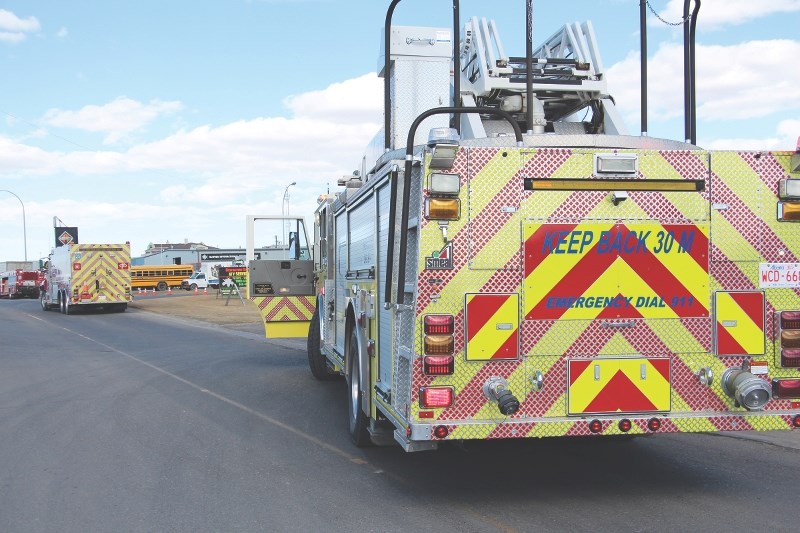AIRDRIE - Airdrie Fire Chief Mike Pirie is aligning with his fellow fire chiefs across the province in expressing concerns about a proposed change to Alberta’s Traffic Safety Act, which if enacted would no longer require vehicles on all lanes to slow down when driving past the scene of an accident.
The Alberta Ministry of Transportation and Economic Corridors proposed the amendment to the Traffic Safety Act (Bill 5) at the beginning of August, stating, “only vehicles on the same side of single lane highways as a stopped roadside worker vehicle with its flashing lights activated must slow down to 60 km/h or the posted speed limit (whichever is lower).”
The proposed bill drew swift condemnation from the Alberta Fire Chiefs Association in a statement released to the media on Aug. 11.
“The Alberta Fire Chiefs Association (AFCA) wishes to voice its deep disappointment and concern regarding recent amendments made to the safety provisions introduced by Bill 5, pertaining to the requirement for drivers to reduce speed when passing emergency services attending to a scene,” it reads in part. “As an organization committed to the safety and well-being of both emergency responders and the general public, the AFCA finds these changes to be of significant concern.”
Fire Chief Pirie echoed these concerns in a recent interview with the Airdrie City View.
“There are a couple aspects to this,” Pirie explained. “One, is the lack of consultation with the people who are actually working out on the highways – our (firefighting) group being one of them. And, we are now going backwards to a system where we’re allowed to have vehicles moving at high speeds in very close proximity to our workers.”
Pirie said he didn’t understand the genesis of the proposed change to the Traffic Safety Act, saying he was “puzzled” as to what the bill was intended to do.
“It is really easy to conjure an image of a five-lane highway at the end of the day on Stoney Trail,” he said, which, in his mind, seems to be where this bill is aimed at. “That is is not the majority of highways in this province. Most of them are single lane, especially the secondary roads. When you are trying to work on the highway as a firefighter, and let’s say you are in the median or the breakdown lane, the width of a single lane is not a lot.”
Pirie said these proposed changes to speed requirements while passing the scene of an accident were, at minimum, shortsighted, and in broader application, perhaps evens deadly.
“You get people moving slower so that they can actually react,” he said. “Imagine being in the middle lane of Highway 2, and you are allowed to do 110 km/h (past an accident scene). The right lane, the slow lane, is down to 60 km/h because your crews are working in the ditch. All you have to do is hit some ice. How are you going to react? It’s just such a giant step back from what was working.”
Airdrie's fire chief said he believed the amendment will put lives in danger if passed. Not only increasing the risk for first responders, but for accident victims as well.
“Where is the evidence and the research?” he asked. “What was the basis of this decision? I would love to hear that because this is not a good work environment. And not just for firefighters – the firefighters protect paramedics and police officers, and the people who are involved in the collision. That’s the reason we park the trucks the way we do.”
Pirie acknowledged it can be frustrating for motorists to be slowed down on the way home, or on the way to work, due to an accident, but said that was not a good basis to change legislation that is intended to keep everyone safe at the scene.
“These collisions on highways are often serious,” he stated. “So there is somebody having a much worse day than being late to work, or trying to get somewhere … Having (drivers) move quicker isn’t going to make the job (of first responders) any easier, and is definitely not going to get the crews off scene any faster.”




